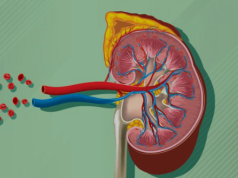Diabetes is a long-term medical disorder marked by elevated blood sugar (glucose) levels. Depending on the type of diabetes—Type 1, Type 2, or gestational diabetes—the symptoms might differ, but there are a few typical signs that are usually suggestive of the condition.
Diabetes has several symptoms, but frequent urination, or polyuria, is one of the most obvious. This happens as a result of the kidneys filtering out more sugar as a result of having too much blood glucose, which is then eliminated through urine. The body loses more water as a result, which increases the amount of urine produced. In addition, polydipsia, or excessive thirst, is another typical symptom. Persistent thirst is caused by the body signaling that it needs more water due to fluid loss from frequent urination.
Another sign, particularly in Type 1 diabetes, is unexplained weight loss. People with Type 1 diabetes may lose weight even when they eat more than normal to satisfy their appetite because their bodies are unable to use glucose as fuel. Rather, they begin metabolizing fat and muscle to produce energy. Although it is less frequent, weight loss with Type 2 diabetes is still possible if the condition is not well controlled.

Weakness and fatigue are common signs of all forms of diabetes. Because glucose cannot be used by the body’s cells as an energy source, people frequently experience fatigue and a lack of energy. High blood sugar levels can also result in blurred vision because they cause the lens of the eye to expand and impair vision.
Diabetes also causes numerous infections or sores that heal slowly. Elevated blood glucose levels can hinder immunological function and blood circulation, making it more difficult for the body to fight off infections and mend wounds. Poor circulation can cause serious difficulties in the extremities, including the feet, where this can be especially problematic.









